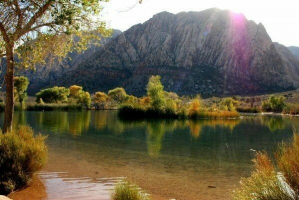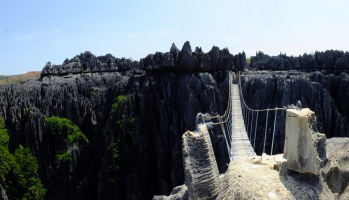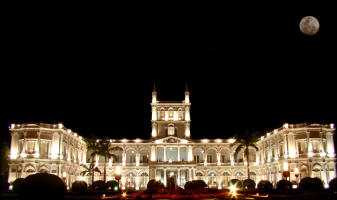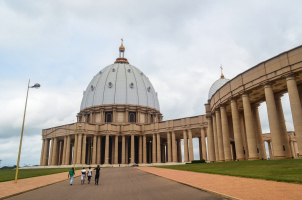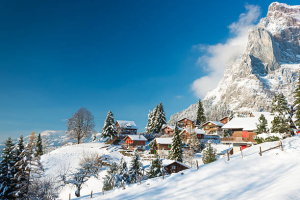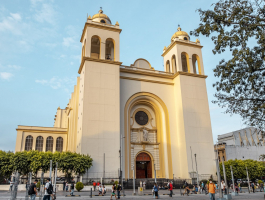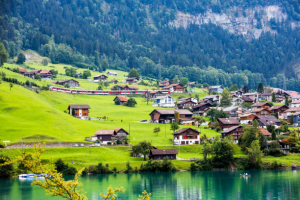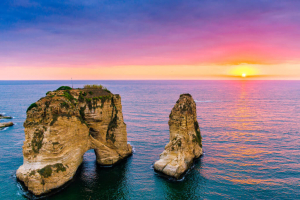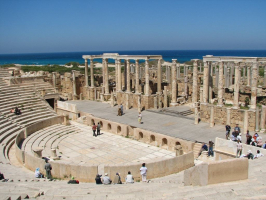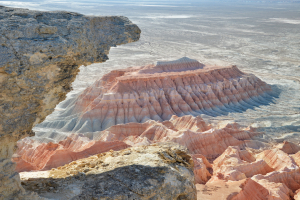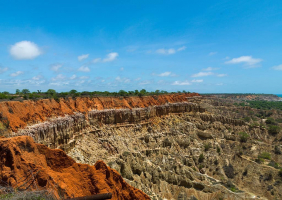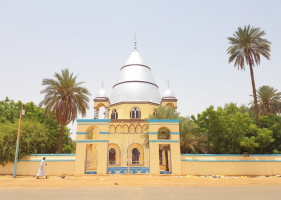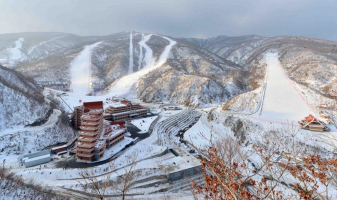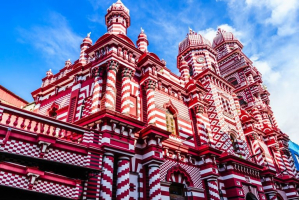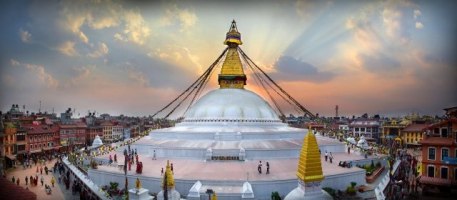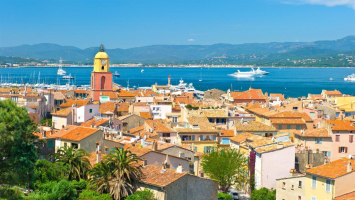Top 14 Best Places to Visit in Lisbon
Lisbon, Portugal's capital, is one of the most beautiful and cosmopolitan cities in Europe. It's a seaside town spread out over a series of hills near the ... read more...mouth of the Tagus River. In the 15th and 16th centuries, daring navigators set sail from here to sail unknown waters and chart new lands, and the legacy of this "golden age of discovery" underpins much of the city's culture and heritage. There are some best places to visit in Lisbon.
-
The Lisbon Oceanarium is one of Europe's finest and one of the world's largest aquariums. It's also the most family-friendly of the city's visitor attractions. The oceanarium, designed by Peter Chermayeff and built for the Expo 98 World Exposition in what is now known as Parque das Naçes, is home to a dizzying array of fish and marine animals, including dozens of different bird species.
The clever design represents four distinct seascapes and landscapes, effectively representing the habitats of the Atlantic, Pacific, Indian, and Antarctic oceans. These encircle a massive central tank teeming with fish of all shapes and sizes, including graceful rays, bulbous sunfish, and sleek sharks—children's favorite deep-sea denizens. The wraparound plexiglass allows for an incredible close-up view of this magical underwater world, but you should also look for less obvious, but no less extraordinary, species housed in smaller aquaria, such as the exquisitely delicate sea dragon and the comic clownfish.
The various ecosystems are fascinating to explore. The Antarctic habitat, for example, features playful penguins, while the Pacific tank features a pair of spirited sea otters. The Oceanário de Lisboa actively promotes ocean conservation and, in addition to its enviable reputation as one of Portugal's most popular tourist attractions, has received international acclaim for its marine environmental awareness campaigns. Most importantly, it's a lot of fun.
Address: Esplanada Dom Carlos I s/nº, 1990-005 Lisboa, Portugal
Timings: 10AM - 7PM
Phone: +351 21 891 7000
Google rating: 4.7/5Facebook: https://www.facebook.com/Oceanario.de.Lisboa/
Youtube Channel: Oceanário de Lisboa 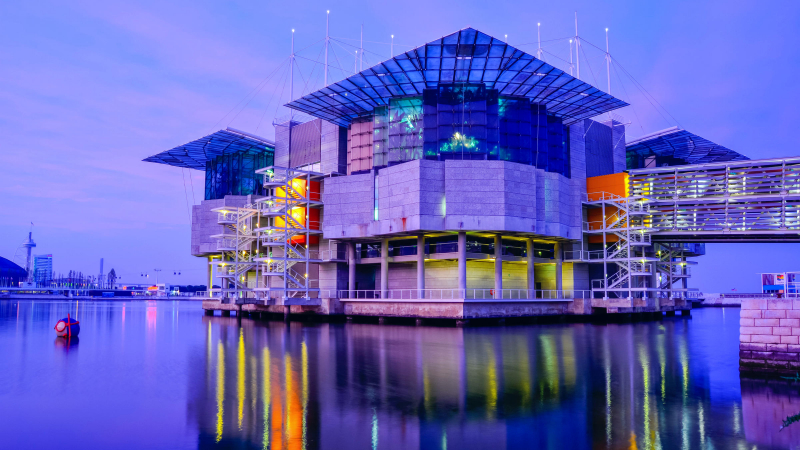
Photo owner: Pavel Arzhakov -
The Museu Calouste Gulbenkian is a sparkling jewel in Lisbon's cultural crown, as well as one of Europe's most celebrated museums. The facility is named after Calouste Sarkis Gulbenkian, an Armenian oil magnate born in 1869 who bequeathed his vast private art collection to Portugal shortly before his death in 1955. It is located in a lush, verdant park on the city's northwestern outskirts. A foundation was established in accordance with the terms of this endowment, the centerpiece of which is this purpose-built arts complex.
Gulbenkian's incredible hoard contains priceless artworks from all over the world spanning 4000 years, from ancient Egypt to the late twentieth century. You could easily spend half a day browsing the exhibition galleries with so many pieces from so many different periods in history to absorb, but your patience will be rewarded with a mesmerizing journey through one of the continent's finest art collections. Highlights in the Classical and Oriental Art galleries include 11 Roman medallions discovered in Abu Qir, Egypt, that were struck to commemorate the Olympic Games held in Macedonia in AD 242. The 17th-century Persian and Turkish carpets on display are among the best preserved in the world, demonstrating Gulbenkian's keen interest in Islamic art.
Gulbenkian's favorite painting is Portrait of Hélène Fourment (c.1630) by Rubens, which is among the Rembrandts, Van Dycks, and other masters in European Art (14th-17th centuries). The rare clocks and timepieces displayed in the French 18th-century Decorative Arts hall are all in working order; arrive on the hour and listen to them chime. While you're here, take a look at the armchair that once belonged to Marie Antoinette. As you move through the building, you can see more 18th and 19th-century paintings and sculptures, including Turner's vivid and dramatic The Wreck of a Transport Ship (1810). One room is dedicated to Francesco Guardi and his Venice studies. Keep an eye out for Houdan's 1780 sculpted Diana.
The museum tour concludes with a fantastic collection of jewelry and glassware created by René Lalique, a French Art Nouveau jeweler (1860-1945). Except for the startling and flamboyant Dragonfly woman corsage ornament, worn once onstage by actress Sarah Bernhardt, none of the brooches and necklaces were ever worn (1844- 1923). This museum is considered one of the best places to visit Lisbon.
Address: Av. de Berna 45A, 1067-001 Lisboa, Portugal
Timings: 10AM - 6PM (Closed Tuesday)
Phone: +351 21 782 3000
Google rating: 4.7/5Website: https://gulbenkian.pt/museu/
Youtube Channel: World Art Foundations - WAF TV 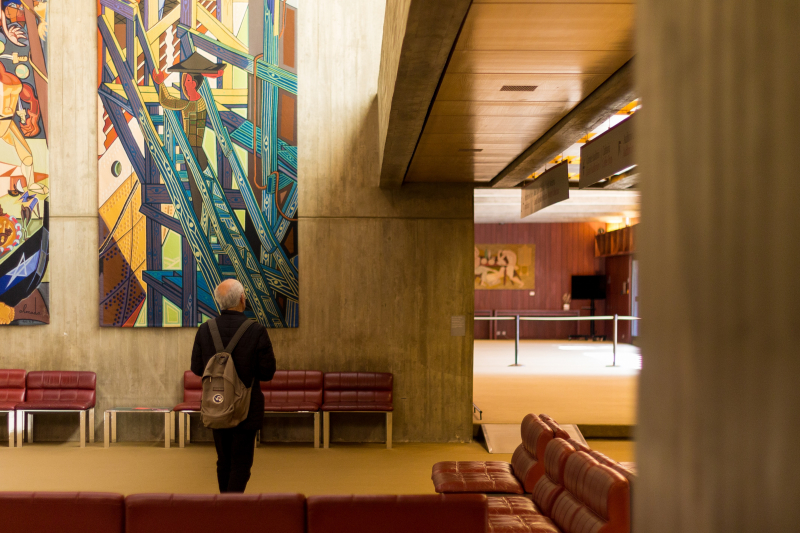
Image by Rui Alves via unsplash.com -
Praça do Comércio, Lisbon's massive riverfront square, is impressive from the ground, but its true scale is revealed only when viewed from the Arco da Rua Augusta. The iconic 19th-century arch is located on the concourse's northern edge, near the southern tip of Rua Augusta, the city's main pedestrianized thoroughfare. The monument was built to commemorate the reconstruction of the capital following the 1755 earthquake and was designed by Portuguese architect Santos de Carvalho. It was inaugurated in 1873.
The public has only recently been allowed to visit the top of the arch, where a terrace is topped by an allegorical statue of Glory, which itself crowns figures representing Bravery and Genius and is decorated with wreaths. An entablature supports additional statues of national heroes, including Vasco da Gama and the Marquês de Pombal, beneath this.
An elevator takes visitors to the top, where they must negotiate a steep spiral staircase to reach the terrace. The view to the south is magnificent, stretching across the square and over the river. Turning north, the view encompasses Rua Augusta and the entire Baixa (downtown) district of Lisbon. A 1941 mechanical clock on the platform strikes an hour and a half hour. The mechanism of the clock, which is housed within the arch, can be admired in all its intricate detail, as can an illustrated panel outlining the arch's own historical timeline.
Address: R. Augusta 2, 1100-053 Lisboa, Portugal
Timings: Open 24 hours
Google rating: 4.7/5Website: https://www.visitlisboa.com/pt-pt/locais/arco-da-rua-augusta
Youtube Channel: Stuart's TRAVEL VIDEOS 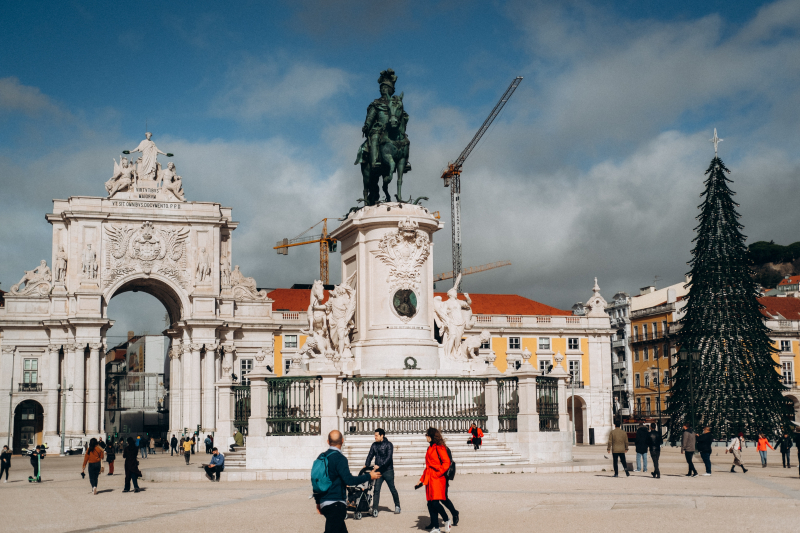
Image by Yana Hurskaya via unsplash.com -
Among the best places to visit in Lisbon, the Basilica da Estrela is one of them. Because of its omnipresence on the city's skyline, the gleaming chalk-white dome of the Basilica da Estrela (Star Basilica) draws admiring glances from all over Lisbon. The church, located on a hill west of the city center, is one of the grandest in the capital.
The basilica was commissioned by Maria I, the daughter of King José I, and was finished in 1790. The limestone façade, adorned with a smorgasbord of statues and allegorical figures, is balanced by twin bell towers and is similar in design to the Mosteiro Pálacio Nacional de Mafra, albeit on a smaller scale. The interior is cool and serene (a welcome relief on a hot day), and the blueprints of architect Mateus Vicente de Oliveira and later Reinaldo Manuel are translated into a vast, spacious interior of various shades of marble. Looking up from near the high altar, the dome resembles a massively inflated balloon bathed in soft translucent light.
The tomb of Maria I is on one side, but the extraordinary Nativity scene crafted in cork and terra-cotta by Machado de Castro should not be missed. It is displayed in a room that is occasionally locked. If this is the case, request that the sacristan inspect it. Outside, opposite the basilica, is the leafy Jardim da Estrela, Lisbon's most beautiful park and a wonderful place to relax.
Address: Praça da Estrela, 1200-667 Lisboa, Portugal
Timings: 10AM - 7:30PM
Phone: +351 21 396 0915
Google rating: 4.6/5Website: https://www.patrimoniocultural.gov.pt/en/
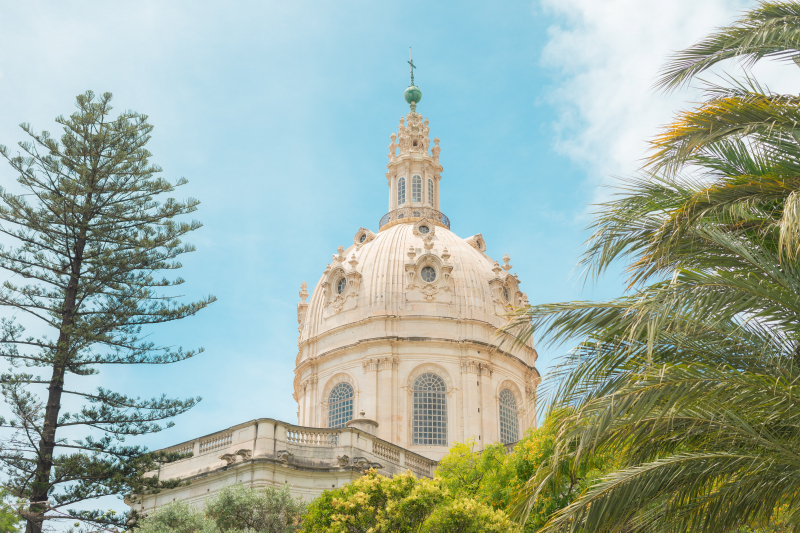
Image by Freguesia de Estrela via unsplash.com Youtube Channel: reisfreaks -
The enormous Guas Livres aqueduct, one of Lisbon's most iconic landmarks, began supplying the Portuguese capital with fresh water in 1748, piped from a spring located to the north of the city. The section spanning the Alcntara valley is the most impressive section of this remarkable 18th-century water system, and it was previously closed to the public. However, it is now possible to walk the entire length of the aqueduct by simply arriving at the entrance, and the experience is quite enlightening.
In reality, what you see is only a small portion of the main 19-kilometer pipeline. Its total length, including tributaries, is astounding: 58 kilometers. The aqueduct's construction is based on the principle of gravity: water would flow unheeded at a constant rate, and the gently sloping design allowed it to be delivered to Lisbon quickly and efficiently. The eye-catcher is the imposing central section. The 35 arches that span the valley rise up to 65 meters above the city. The aqueduct's design signature is a testament to the Italian architect Antonio Canevari and later, Custódio José Vieira and Manuel da Maia, both Portuguese, who were all commissioned by King Joo V.
The valuable liquid commodity would have been collected at Me d'Agua das Amoreiras, a water reservoir in Lisbon's Amoreiras district that can also be visited separately. This solid, bunker-like stone building, replete with Gothic flourishes, was completed in 1745 and resembles a grotto. Water floods the lower levels of the cistern, but above, the vaulted ceiling sprouts from the surface-rising pillars. The gallery is now used as a cultural venue, hosting art exhibitions and music concerts on a regular basis. The roof affords fine views across the city.
Address: Praça das Amoreiras 10, 1250-020 Lisboa, Portugal
Timings: 10AM - 1:30PM (Closed Monday)
Phone: +351 21 810 0215
Google rating: 4.6/5Website: http://www.epal.pt/
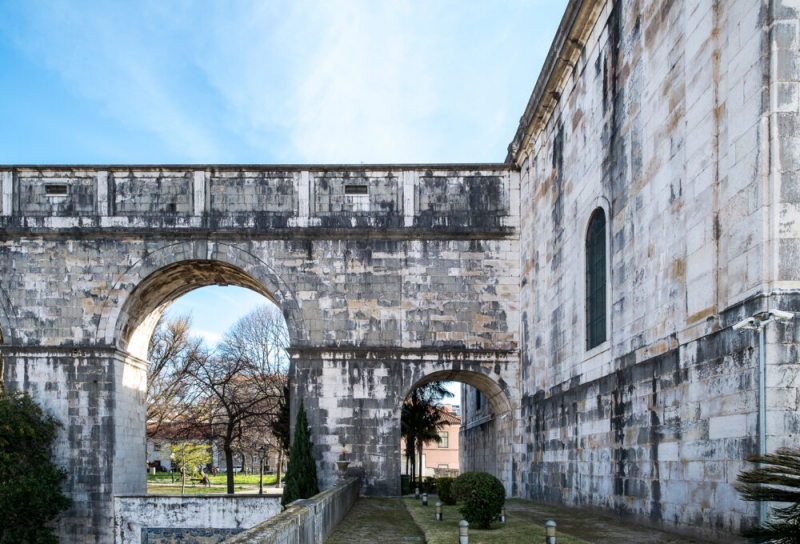
Photo owner: José Vicente - Câmara Municipal de Lisboa 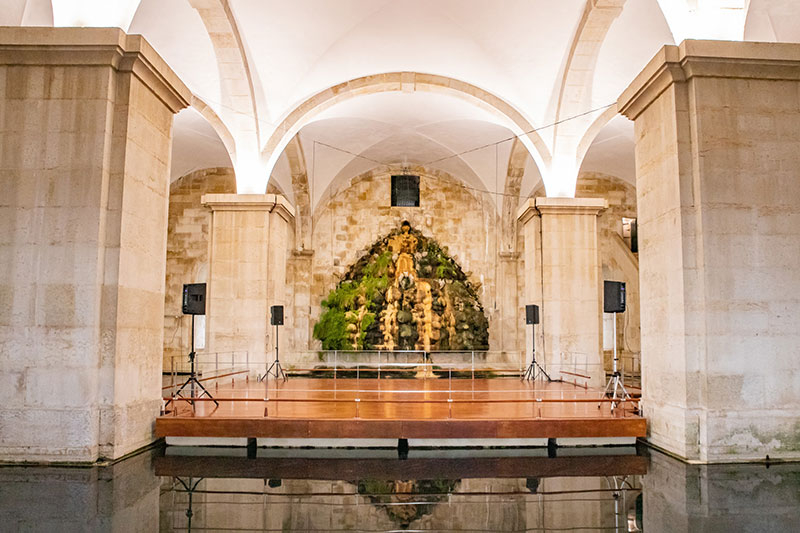
Photo owner: Ruben Ramos -
The National Museum of Ancient Art is a must-see on any tourist itinerary and one of Lisbon's most important cultural attractions. This is Portugal's national gallery, and it houses the country's largest collection of Portuguese 15th- and 16th-century paintings. An equally impressive collection of European, Oriental, and African art adds to the enchantment. The museum is located west of the city center in a 17th-century palace that was built over the ruins of the Saint Albert Carmelite monastery, which was almost completely destroyed in the 1755 earthquake. Fortunately, the chapel survived and is now incorporated into the structure.
The extensive permanent collection, spread across three levels, requires at least two hours of your time. Begin by exploring the aforementioned St. Albert Chapel on Level 1 and then meander through rooms displaying Portuguese applied art: furniture, tapestries, and textiles, among other objects, many of which reflect the influences of Portugal's colonial explorations. (Keep an eye out for the exquisite 17th-century silver gilt casket from India.)
Indeed, there are some genuinely remarkable works on Level 1. Here, notable works include Hans Holbein the Elder's Virgin and Child with Saints (1519) and Albrecht Dürer's 1521 portrait of St. Jerome. The Temptations of St. Anthony (c.1500) by Hieronymus Bosch is a highlight.
Level 2 is dominated by jewelry, ceramics, gold, silverware, and art from the Portuguese Discoveries, but it makes a point of studying the fascinating 16th-century Japanese Namban screens that depict Portuguese trading in Japan. The third level is dedicated to Portuguese painting and sculpture. The altarpiece depicting the Panels of Saint Vincent was painted in 1470-80 by Nuno Gonçalves, the official artist for King D. Afonso V. The gardens at the back of the museum are worth mentioning. The terrace provides excellent views of the river, and there is a café where you can relax and reflect on the visual feast you have just experienced.
Address: R. das Janelas Verdes, 1249-017 Lisboa, Portugal
Timings: 10AM - 6PM (Closed Monday)
Phone: +351 21 391 2800
Google rating: 4.6/5Website: http://www.museudearteantiga.pt/
Youtube Channel: tubedorui 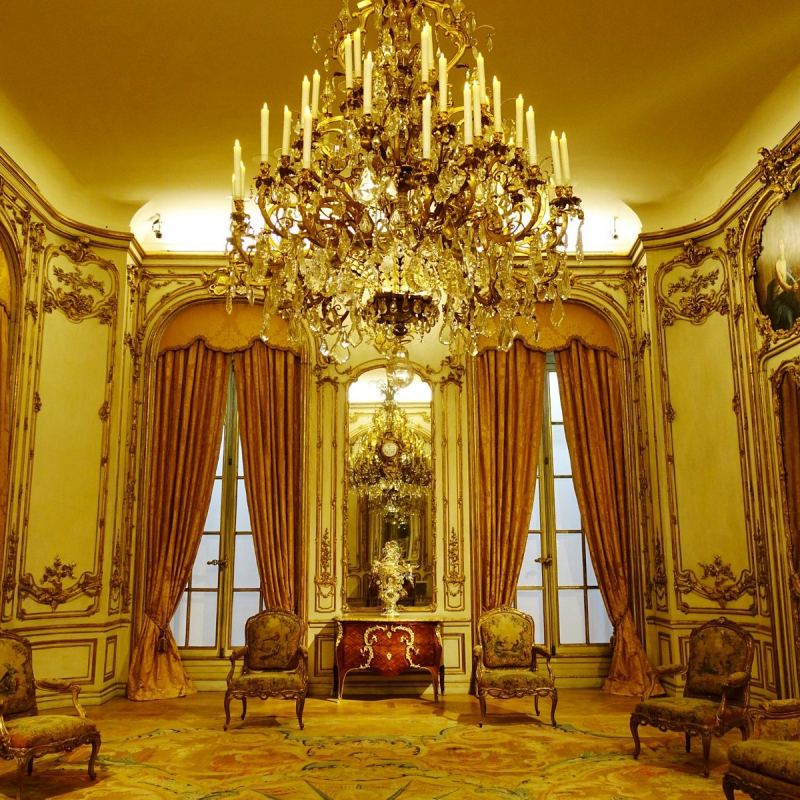
Photo owner: DanishTravelor -
The Belém Tower, arguably the most iconic of all Lisbon's historical monuments, squats in the shallows near the mouth of the River Tagus as a symbol of Portugal's extraordinary Age of Discovery in the 16th century. The tower, built as a fortress in 1515–21 and originally located in the middle of the river (the watercourse has shifted over the years), represents the pinnacle of decorative Manueline architecture. Its ornate façade is adorned with fanciful maritime motifs, including twisted rope and armillary spheres carved in stone.
This monument is so valuable and iconic that it is designated as a UNESCO World Heritage Site. The most interesting interior feature, which is spread across several levels, is the second-floor King's Chamber, which opens onto a Renaissance loggia. Above the elegant arcades is Manuel I's royal coat of arms. Climb the impossibly steep spiral staircase to the top-floor tower terrace for a stunning view of the waterfront esplanade and the river. This is one of the best places to visit Lisbon.
Address: Av. Brasília, 1400-038 Lisboa, Portugal
Timings: 10AM - 5:30PM (Closed Monday)
Phone: +351 21 362 0034
Google rating: 4.6/5Website: http://www.torrebelem.pt/
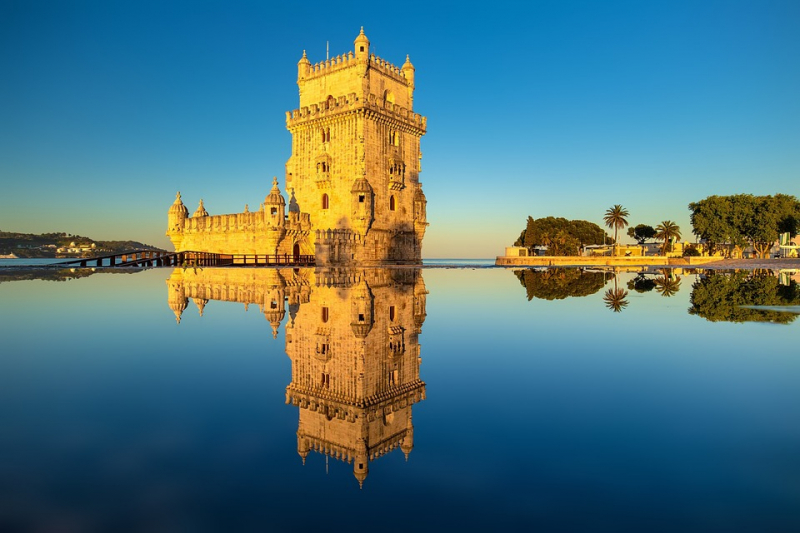
Image by Julius_Silver via pixabay.com Youtube Channel: IB Foto Travel -
The angular Monument to the Discoveries, an enormous monolith that leans over the River Tagus to resemble the prow of a caravel, the type of ship commanded by Portuguese navigators in the 15th century to chart unexplored oceans and discover new lands, dominates the Belém waterfront.
The design is intentional. This iconic structure was built in 1960 to commemorate the 500th anniversary of Henry the Navigator's death. It pays appropriate tribute to all those actively involved in the development of the Golden Age of Discovery through an amazing frieze of statues of the most prominent personalities, figures such as Vasco da Gama, Ferno de Magalhaes, and Pedro Alves Cabral, set along both sides of the monument. Henry stands in the foreground, caravel in hand.
After admiring those immortalized in stone, take an elevator to the top of the monument for a bird's-eye view of the riverfront and surrounding area. A massive pavement compass, a giant mosaic map of the world charting the locations and dates each new land was discovered, is sunken into the esplanade below. It's one of the more unusual photo opportunities in Lisbon.
Address: Av. Brasília, 1400-038 Lisboa, Portugal
Timings: 10AM - 6:30PM
Phone: +351 21 303 1950
Google rating: 4.6/5Website: http://www.padraodosdescobrimentos.pt/
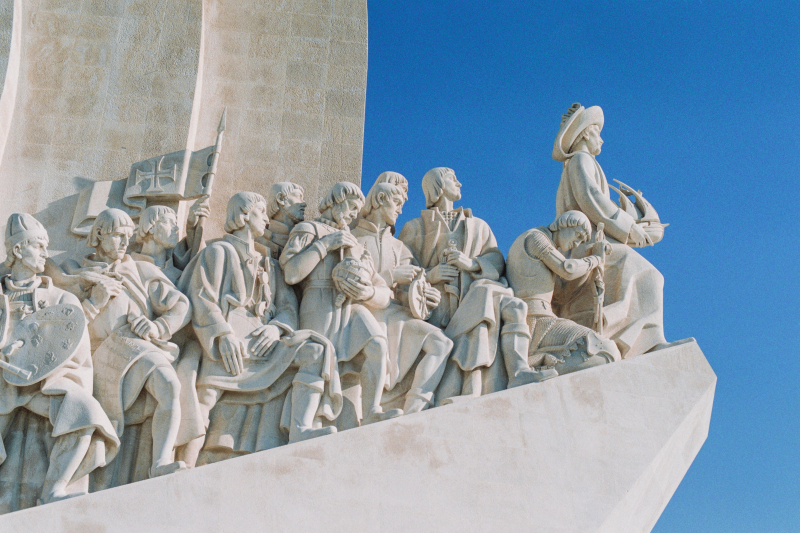
Image by Portuguese Gravity via unsplash.com Youtube Channel: Nuno Ratao -
This charming country manor house, the family home of the Marquês de Fronteira, is tucked away on the city's northwestern outskirts. Built-in 1640 as a hunting lodge for Joo de Mascarenhas, the first Marquês de Fronteira, it was later refurbished as a palace and remains one of Lisbon's most beautiful and serene private residences. Fortunately, some of the rooms in this noble retreat, as well as the beautifully landscaped grounds, are open to the public, and investing in a guided morning tour of the premises provides a rewarding glimpse into 17th-century Portugal.
This is the best place in town to see 17th-century azulejos outside of the Museu Nacional do Azulejo. The palace is adorned with exquisite tile work, most notably in the Sala das Batalhas (Battles Room). Wall panels depict scenes from the War of Restoration, a long and bloody campaign to oust Spanish rule from Portugal. The attention to detail is astounding, bringing to life the various battles that eventually restored the country's independence from its occupying neighbor.
This is not a museum, and the furniture and interior decoration are not labeled. Tours, on the other hand, are informative, educational, and discreet, and provide access to additional areas such as the lounge, library, and dining room, where unique Amsterdam tiles adorn the interior. Art historians will undoubtedly spot some noteworthy pieces, such as the Pellegrini portrait.
The formal gardens, a verdant oasis embroidered with subtropical flora, are included in the tour. The "King's Gallery" is a terrace with decorative niches containing busts of Portuguese kings. It's perched above a large pond teeming with carp. Similarly, the extraordinary chapel terrace is embellished with azulejo panels depicting Greek and Roman noble arts, as well as several 17th-century statues.
Address: Largo São Domingos de Benfica 01, 1500-554 Lisboa, Portugal
Timings: 10AM - 5PM (Closed Sunday)
Phone: +351 21 778 2023Google rating: 4.5/5
Website: http://www.fronteira-alorna.pt/
Youtube Channel: BeSisluxe Tours 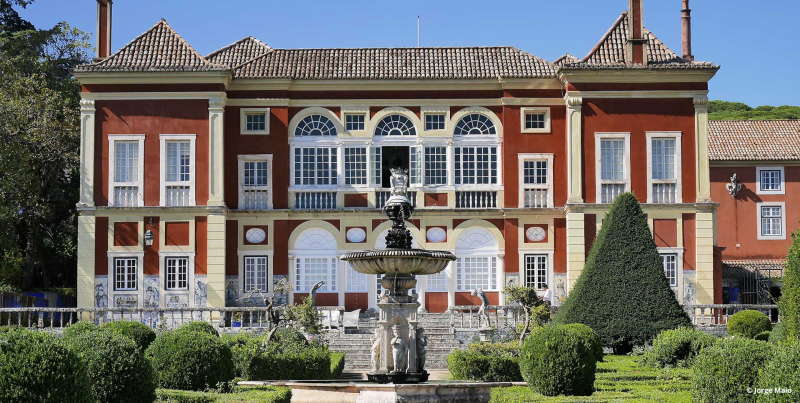
Photo owner: Jorge Maio -
The church and museum of So Roque in Bairro Alto complement each other to provide an absorbing cultural experience. The Jesuit Order founded So Roque in the late 16th century, and its bland and unassuming Renaissance façade belies a sumptuous interior, one of the most impressive of all Lisbon's religious sites. The church is celebrated for its series of side chapels, one of which, the Capela de So Joo Baptista, simply dazzles the onlooker with its ornate decoration, richly embellished with marble, azulejos, and gilded woodwork.
In 1742, King Joo V commissioned Italian architects Luigi Vanvitelli and Nicola Salvi to create a veritable jewel box, which was built in Rome and shipped all the way back to Lisbon. The intricate mosaic The Baptism of Christ by Mattia Moretti, completed in 1750, is adorned with amethyst, lapis lazuli, precious marbles, and inlaid with gold, silver, and ivory. Another chapel, the Capela de So Roque, contains the oldest and most striking azulejos, signed and dated 1584 by Francisco de Matos. Above all, there is a magnificent ceiling — the only painted ceiling from the Mannerism period in Lisbon.
The adjacent museum houses sacred art as well as the church's most valuable treasures, including those from the Chapel of St. John. The Shrine to So Roque, a series of early 16th-century panels depicting the saint's life, is a highlight. Spend time, however, looking for exquisite individual pieces, such as Saint Francis Xavier's reliquary casket made of pierced silver in Goa in 1686. A rare collection of 18th-century vestments adorned with silk and gold embroidery.
Address: Igreja de São Roque, Largo Trindade Coelho, 1200-470 Lisboa, Portugal
Timings: 10AM - 6PM
Phone: +351 21 323 5065
Google rating: 4.5/5Website: https://mais.scml.pt/museu-saoroque/
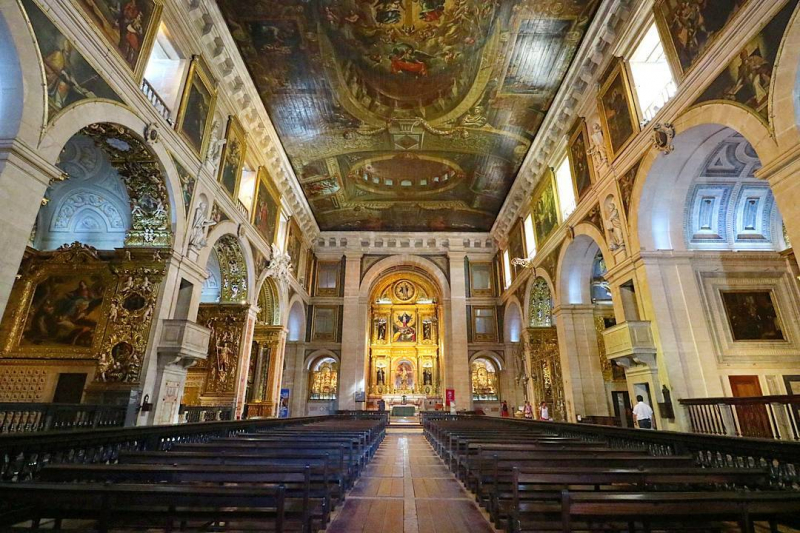
Image source: @lindadada0412 Youtube Channel: Fer Nando -
This extraordinary archaeological museum, located on and beneath Rua Augusta in the city's Baixa (downtown) district, is one of the city's more unusual visitor attractions. The museum was built around excavations that revealed the remains of Iron Age dwellings and Roman fish-preserving tanks discovered by a construction team while building a new bank.
More artifacts were discovered as work progressed, including Roman mosaics, a 5th-century Christian burial chamber, and the foundations of Moorish walls and flooring. The developers chose to build on top of a site that had been occupied by various civilizations for thousands of years. Indeed, medieval pottery and coins were discovered, as well as 18th-century foundations. Instead of demolishing this fascinating multi-layered treasure trove, it was decided to build over and around it to preserve the entire site.
Today, you can take part in a free, pre-booked guided tour that begins on the ground floor in the exhibition hall, which has glass floor panels that allow visitors to see sections of the excavated basement. The history lesson continues downstairs, where you will be guided through a series of eerie, subterranean galleries designed to display what has been hidden for millennia. By chance, the bank's name is Millennium.
Address: R. dos Correeiros 9, 1100-061 Lisboa, Portugal
Timings: 10AM - 5PM
Phone: +351 21 113 1070
Google rating: 4.5/5Website: https://www.fundacaomillenniumbcp.pt/nucleo-arqueologico/
Youtube Channel: 小象素 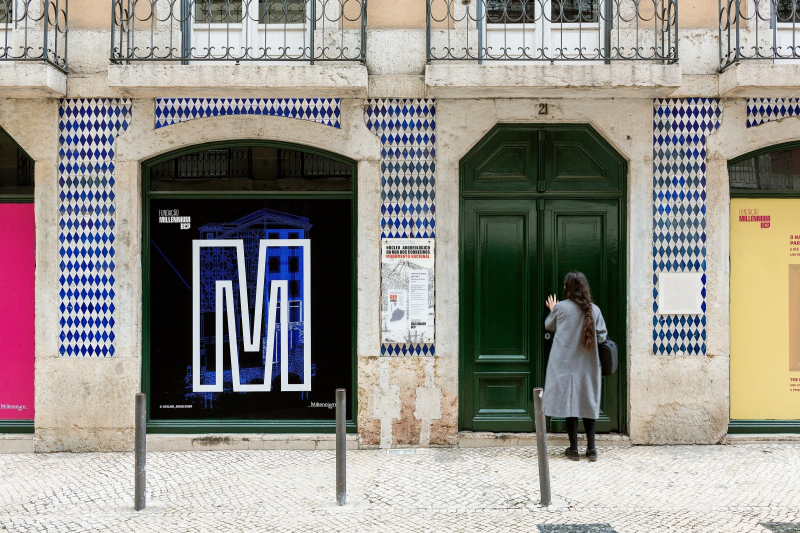
Photo owner: Giovanni Emilio Galanello -
When it comes to the best places to visit Lisbon, people can't help but mention an iconic landmark, St. George's Castle, the most well-known of Lisbon's major attractions, which commands a glorious position near Alfama on the crown of a hill overlooking the Portuguese capital. This is a popular tourist destination in Lisbon. The castle's impressive battlements, engaging museum, and fascinating archaeological site combine to make it a rewarding experience for the entire family, and children, in particular, will enjoy clambering over the sturdy walls and towers that encircle the grounds.
This site has had a stronghold since the Iron Age, but it was a castle that the Moors defended against invading Christian forces before being overrun by Afonso Henriques in 1147. The victorious king constructed the Aláçova Palace, which housed subsequent monarchs until a new royal residence was built near the river. (The excavations seen today include the palace foundations.)
Most visitors are content to admire the spectacular views from the observation terrace, which offers an uninterrupted panorama of the city, the River Tagus, and the distant Atlantic Ocean. For a different perspective, there's a Camera Obscura periscope, housed in one of the towers, which provides viewers with an unusual 360-degree projected view of the city below.
Address: R. de Santa Cruz do Castelo, 1100-129 Lisboa, Portugal
Timings: 9AM - 7PM
Phone: +351 21 880 0620
Google rating: 4.4/5Website: http://www.castelodesaojorge.pt/
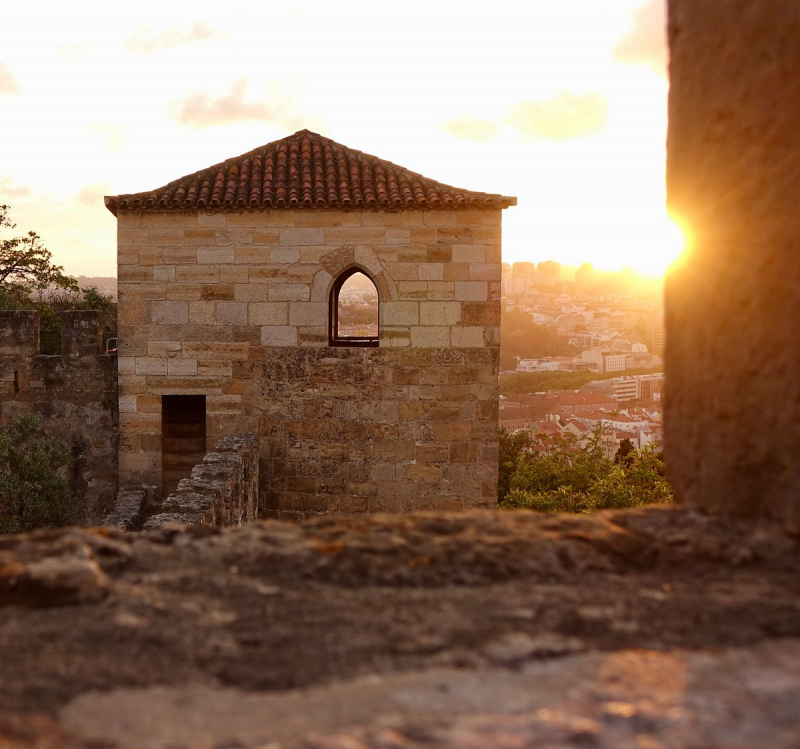
Photo owner: Sharon H Youtube Channel: Zen Walks -
The Sé, Lisbon's fortified Romanesque cathedral in the city's Castelo district near the ancient Alfama neighborhood, has undergone several design changes since the original structure was consecrated in 1150. A series of earthquakes, culminating in the devastating 1755 tremor, completely demolished what remained of the 12th century. What you see today is a fusion of architectural styles, with the twin castellated bell towers that adorn the downtown skyline standing out, especially in the late afternoon when the setting sun burnishes the brickwork with a golden veneer.
Inside, a resplendent rose window helps to illuminate the cathedral's rather gloomy interior, and you're likely to head straight for the treasury, which houses the cathedral's most valuable artifacts, such as silverware made up of chalices and reliquaries, intricately embroidered vestments, statuary, and a number of rare illustrated manuscripts.
It's also worth spending some time in the Gothic cloister, not so much for its chapels (one of which still has its 13th-century wrought-iron gate), but because on-site excavations have revealed the foundations of Roman and Moorish dwellings (the cathedral was built over the ruins of a mosque), and the archaeological dig is a worthwhile visitor attraction in its own right.Address: Largo da Sé, 1100-585 Lisboa, Portugal
Timings: 9:30AM - 7PM (Closed Sunday)
Phone: +351 21 886 6752
Google rating: 4.4/5
Website: https://www.facebook.com/sedelisboa/
Youtube Channel: For 91 Days Travel Blog 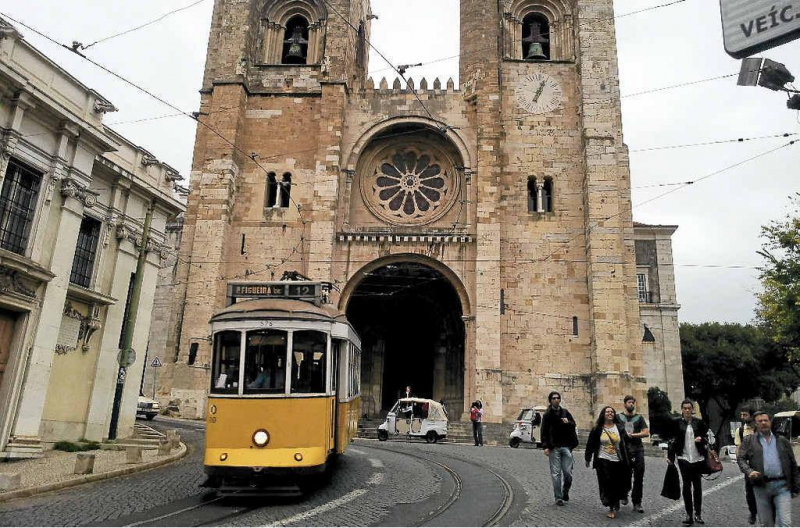
Photo owner: Susan Dyson -
The odd-looking Santa Justa Lift, a neo-Gothic elevator and the city's most eccentric and novel mode of public transportation, looms somewhat incongruously over the rooftops of Lisbon's Baixa (downtown) district.
At first glance, its riveted wrought-iron frame and battleship-grey paint evoke the Eiffel Tower in Paris, and there is a connection: the elevator was designed by Raoul Mésnier du Ponsard, an apprentice of Gustave Eiffel, and was inaugurated in 1901. It was built to connect the Baixa neighborhood to the Largo do Carmo neighborhood in the Bairro Alto neighborhood, a trendy area of the city filled with expensive shops, Fado houses, and small restaurants.
Today, curious tourists rather than commuters take the 32-meter journey to the top, traveling in wood-paneled cabins with original polished brass instruments. The cabins squeak their way to a platform beneath the top terrace. Passengers can either exit and walk across a bridge into Bairro Alto, or they can climb the spiral staircase to the upper terrace. The views from the top are spectacular, encompassing a bustling urban canvas of pedestrianized streets, picturesque squares, and the ever-present castle and River Tagus. You can also get a great view of the nearby Igreja do Carmo. Expect long lines throughout the summer.
The Elevador da Bica, a funicular railroad built by Raoul Mesnier de Ponsard and opened to the public in 1892, is another unique mode of transportation in Lisbon. It still rises above the steep Rua da Bica de Duarte Belo and transports passengers to a panoramic viewpoint today. This funicular railroad's lower station is almost hidden behind a facade on Rua de S. Paulo with the inscription "Ascensor da Bica" (no. 234). While you're here, check out Bica, a peaceful little quarter that runs down from the Calçada do Combro/Rua do Loreto to the Tagus. Only a few cars journey here due to its sloping topography, narrow streets, and densely packed buildings.
Address: R. do Ouro, 1150-060 Lisboa, Portugal
Timings: 24 hours
Phone: +351 21 413 8679
Google rating: 4.1/5
Website: http://www.carris.pt/pt/ascensores-e-elevador/Youtube Channel: SE Meyer 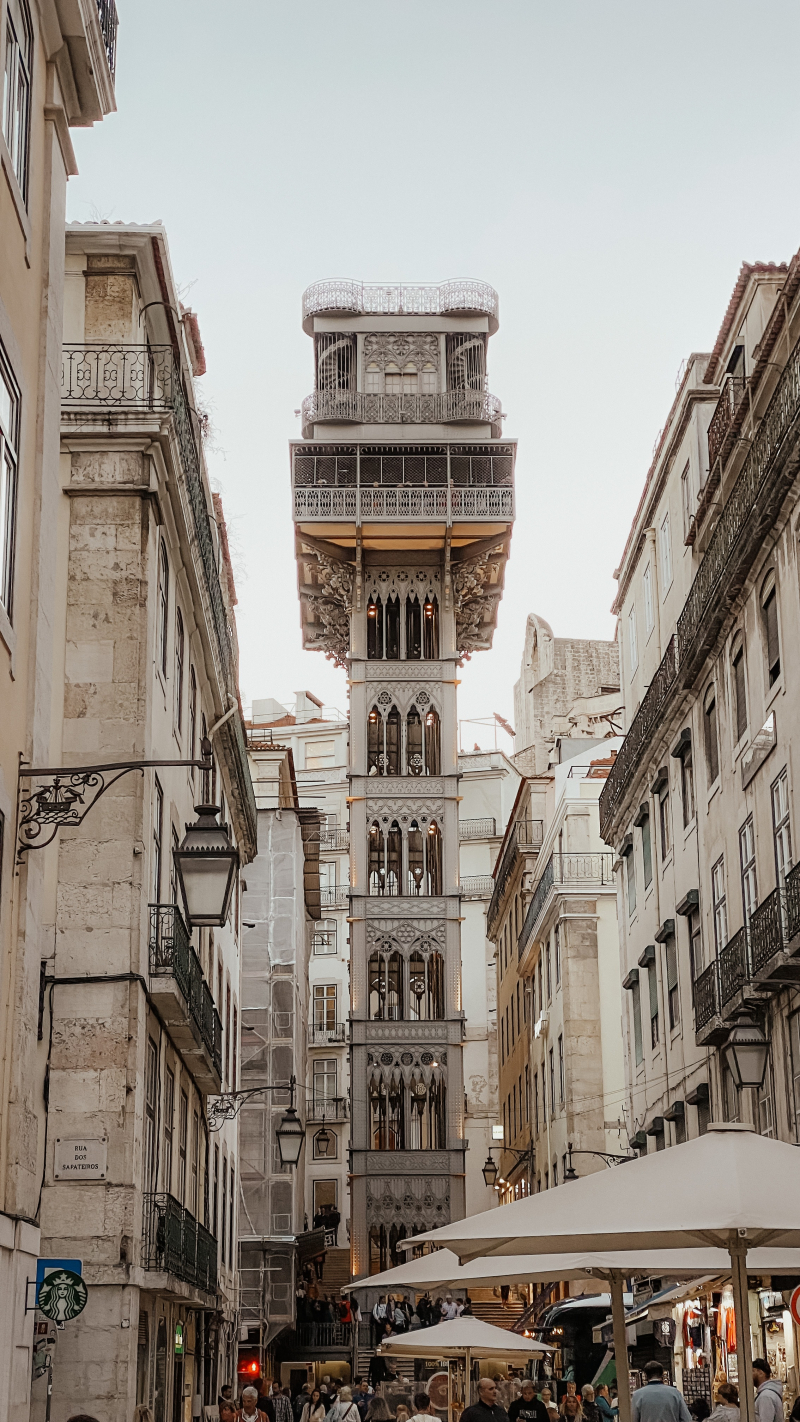
Image by Thayran Melo via unsplash.com

















